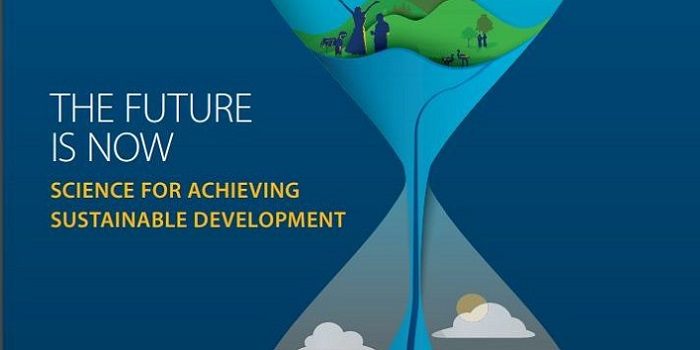The central premise of the human development paradigm has been that conventional measures of progress focussed on income are not sufficient to promote and to measure human wellbeing, and that progress should instead be seen as a process of enlarging people’s choices and wellbeing, as well as enhancing their capabilities.
This broadening of the lens was accompanied by an index, which has provided a simple proxy for a measure of what is inherently multidimensional for policy makers, activists and academics in assessing trends, evaluating and comparing current situations and making decisions and recommendations for improvement. The concept of human development, however, has always been much more complex that the Human Development Index.
The HDRs have focussed on some key dimensions of human development over the years including linking and comparing with other normative frameworks such as human security or human rights. As the world around us evolves and new insights are offered by various disciplines (within and outside academia), by technology, by innovators, and by new social actors, there is a need to review the Human Development paradigm to better account for the inherent complexities in socio-ecological and socio-technical systems and their impact on development pathways. Further goal of development must primarily focus on individuals and their contexts.
“The challenge today is to adopt a systems approach that acknowledges the interdependencies and the interconnexions between human systems, the Earth systems and technological systems, while recognizing contextualized specificities and experiences.”
Dirk Messner
Ultimately, our capacity to do so will determine the very sustainability of these systems we humans depend upon. This ISC-UNDP project is looking at integrating these elements into the concept of Human Development itself. Inter-linked elements that could merit consideration include:

2. Collective and Relational Dimensions
Humans are social beings; their wellbeing is dependent on social institutions that allow them to flourish. Social cohesion and social sustainability are critical for optimal human centred development. Conflict and violence remain fundamental threats to human wellbeing. In recent times, social unrest driven by various dimensions of inequality have taken centre stage in several countries across the globe. Mass protests in 2019, sparked by different issues but all demanding redressal of glaring social and economic inequities highlighting that the current levels of inequality have become a threat to social cohesion.
The most recent HDR (2019) puts a spotlight on inequalities, providing a framework to look at inequalities ‘beyond income, beyond averages and beyond today’ i.e., covering various aspects of human development, beyond summary measurement of inequality that focus on a single dimension and taking a long-term view of inequalities in human development beyond the 21st century.
It is important to pay attention to what holds societies together: collective identities, social relationships, inclusive and fair institutions, levels of cooperation and trust, all key factors to enhance individual and collective resilience. Without compromising the principle that human beings are entitled to rights or are endowed with individual choice and capabilities, human development needs to capture the key role that collective relationships, norms and identities, and institutions have in achieving human development. Insights from a variety of disciplines including anthropology, social psychology, evolutionary biology, and other social and natural sciences about how human societies evolve, develop and operate could be useful in this discussion.

3. Human Well-being and Personal Development
Human development is necessarily impacted by the activity of each entity composing human societies. Indeed,global challenges as identified in the SDGs, take multiple forms in different contexts and affect people in their daily lives.Mental and psychological well-being is the primary determinant of how individuals feel about their lives and this perception has implications for human-centred development. One aspect of this is the importance of the early years and their lasting influence on human development. Evidence shows that early years present a unique opportunity and stage for human brain development and psychological resilience for life, and that they are difficult to compensate at a later stage. Furthermore, the notion of resilience as the “capacity of a system, be it an individual, a forest, a city or an economy, to deal with change and continue to develop” (Stockholm Resilience Centre, 2019), invites to look at differentiated vulnerabilities and capacities to cope and respond to shocks at the individual and household levels.

4. The Digital Transformation
The socio-ecological, collective and relational nature of contemporary societies is today centrally mediated by technological change, and in particular by the digital transformation. Technological change is accelerating at a rate often difficult for humans to grasp. Robotics, high performance computing, 3D printing, huge amounts of data, artificial intelligence and machine learning, global connectivity or telecommunications, have made societies technology-enabled and technology-facilitated. Digital technologies, in particular have been fundamentally transforming the way we produce, consume, relate with each other, design business models or relate to our employers, neighbours and government officials with an unprecedented speed and pervasiveness.
This technology-led empowerment brings new opportunities but also risks and dangers. How will the ongoing and emerging digital transformation shape our lives and how will the gains from this transformation be distributed among individuals, communities and generations with varying capacities to harness these opportunities? What is the impact of these technologies on individual wellbeing, on social wellbeing and on the institutions of society?
Leveraging technologies for human development, to serve the goals of social and environmental sustainability, is a major challenge. The impacts of major innovative changes need to be actively managed and investments need to be redirected through policy and institutions (including stronger antitrust policies, laws and industry standards to create incentives, govern the ethical use of data and artificial intelligence or prevent spread of misinformation, for example).
Digitalisation and artificial intelligence are also linked to questions of identity through the creation of new virtual spaces, networks and digital communities, new digital subjects and agents, and augmenting human capacities, calling us to the rethinking of what it is to be ‘human’ in the present context.

5. Local Specificities
Human societies are also grounded in spatiotemporal histories. Contextual and historical details play a part in economic and social development trajectories. There has been widespread recognition since the 1990s that any understanding of development and social transformation need to take into account local (or national and regional) specificities. Aspirations and definitions of ‘well-being’ can also vary by context. Global concepts and indicators thus need to include space for recognition of these factors and consideration of locally relevant responses.
Similarly, historical injustice and privilege shape current socio-political and economic structures and impact how development gains and opportunities are distributed. How might we take considerations such as those related to colonialism, slavery and other such intergenerational dimensions into account as we thinking of enriching our understanding of human centred development?
Understanding the human development concept therefore calls for a clear articulation between global issues (poverty, inequalities, mobility) and local implications and practices.

6. Global Interdependencies
Global interdependencies have been gaining importance over the last 2-3 decades. Poverty declined in many world regions, as a result of globally connected economic activities. In parallel global interdependencies resulted in challenging global risks and transnational crisis: 9/11 and international terrorism at the beginning of the 21st century; the SARS epidemic in Asia in 2002/02, the Ebola crisis in Africa in 2014/16; the global financial crisis in 2008/09; Syrian refugees and African citizens moving towards Europa in 2015/16; the climate crisis and other dynamics of global environmental change as a threat to human civilisation; the COVID-19 pandemic in 2020.
Many people and movements articulate their concerns about governments losing control over these global interdependency dynamics. Trust in governments is eroding; social cohesion is under stress. These trends are being translated in many countries into authoritarian movements, challenging democracy, the idea of multilateralism, and the concept of the “human community” (“Weltgemeinschaft”, invented by Immanuel Kant). “Human development” can only be brought forward, if solutions for the described trends are being developed.
How could international cooperation and the multinational organisational arrangements be revitalized both to better manage global risks and crisis, but most importantly to foster human development?
Back to Rearticulating Human Development Home.
Add your voice to the discussion by responding to the global call for inputs.


